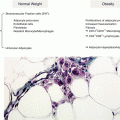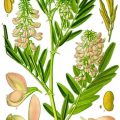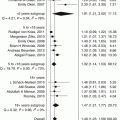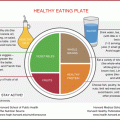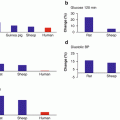Fig. 15.1
Mediterranean diet pyramid: an easy model to make the real Mediterranean diet
The food protein sources are important, and they must be in the diet every day, but it is mandatory to vary adequately the weekly frequency in order to modulate the impact of saturated fat associated to animal protein; for this reason, the consumption of vegetable proteins from legumes should be encouraged. We can find in Mediterranean diet a big variety of legumes: kidney beans, romano beans, fava beans, lima beans, chickpeas, peas, and lentils.
It is important to know that legumes associated with cereals improve their protein quality, because essential amino acid pool is completed. Legumes could be consumed with pasta, rice, spelt or couscous, and polenta in a plate but also as ingredient in a mixed salad or in a soup. The use of legumes as side dish is possible but only if associated with a moderate portion of other protein food such as fish, meat, or eggs; this is important to avoid an excess of protein intake.
Legumes, such as also whole grain, are a rich source of prebiotic fiber that stimulates in the colon the growth of Bifidobacterium, a beneficial bacterial genus. Moreover, many studies have shown the healthy effects of legumes on lipid and glycemic serum human profile. Therefore, there are a lot of reasons to introduce the consumption of this typical Mediterranean food at least two to three times for week.
Besides legumes, fish consumption is advised at least twice a week. Health benefits (decreased risk of cardiovascular events and mortality) from fish consumption are ascribed to n-3 polyunsaturated fatty acids, eicosapentaenoic acid (EPA), and docosahexaenoic acid (DHA). DHA also appears important for neurodevelopment during gestation and infancy [28]. Women of childbearing age and nursing mothers should consume 2 seafood servings/week. Observational studies show positive associations between maternal DHA levels or fish intake during pregnancy and behavioral attention scores, visual recognition memory, and language comprehension in infancy. However, fish also contain contaminants such as mercury, dioxins, and polychlorinated biphenyls. The Environmental Protection Agency determined a reference dose, i.e., the allowable upper limit of daily intake, for methylmercury of 0.1 ug/kg per day (50 μg/week for a 70-kg woman, calculated from the lower 95 % confidence limit at which gestational exposure to mercury may produce abnormal neurologic test scores, multiplied by a tenfold uncertainty factor), and published a focused advisory for women of childbearing age, nursing mothers, and young children. The advisory specifically advises such individuals to avoid shark, swordfish, golden bass, and king mackerel (each containing 50 μg methylmercury per serving); sardines, salmon, crab, tuna, and trout are instead allowed [29].
The meat is a food with high protein content (from 15th to 25 %) and of high biological value, able to make all the amino acids necessary for protein synthesis (essential amino acids) in optimal amounts. It also provides B-complex vitamins, especially B12, and trace elements, particularly iron, zinc, and copper. However, among meat sources, it is better to prefer poultry and to limit red meat and white meat from small mammals – rabbit and hare – red meat is okay but only a few times per month since they are rich in cholesterol and saturated fat meat. A special characteristic of meat from mammalians is the different sialic acid of cell membrane, the difference between N-glycolylneuraminic acid (Neu5Gc) and N-acetylneuraminic acid (Neu5Ac) is tiny, but Neu5Gc is a weak immunogenic compound and its unbalanced and frequent consumption might be on the pro-inflammatory stimuli that play a negative role in long lifespan expected in modern humans [30].
Physical activity and other diet-related lifestyle factors contribute to wellness with Mediterranean patterns. Certain lifestyle factors are of particular interest: the social support and sense of community that accompanies sharing food with family and friends; lengthy meals that provide relaxation and relief from daily stress; and delicious meals, carefully prepared, that stimulate enjoyment of healthy diets.
“The Mediterranean diet is a set of traditional practices, knowledge and skills passed on from generation to generation and providing a sense of belonging and continuity to the concerned communities.” This is the first reason cited by the UNESCO for recognizing the Mediterranean diet as an intangible cultural heritage. This international organization has officially ratified what science has been continuously demonstrating during the last decades. From what we read in the 5-point motivation, it appears quite clear that the UNESCO does not consider MD just as a mere collection of some selected foods but ascribes to the eating habits typical of the Mediterranean basin a cultural-promotion role deserving a special mention as plainly stated in the description of MD: “The Mediterranean diet encompasses more than just food. It promotes social interaction, since Mediterranean diet communal meals are the cornerstone of social customs and festive events. It has given rise to a considerable body of knowledge, songs, maxims, tales and legends. The system is rooted in respect for the territory and biodiversity, and ensures the conservation and development of traditional activities and crafts linked to fishing and farming in the Mediterranean communities of which Soria in Spain, Koroni in Greece, Cilento in Italy and Chefchaouen in Morocco are examples. Women play a particularly vital role in the transmission of expertise, as well as knowledge of rituals, traditional gestures and celebrations, and the safeguarding of techniques.”
Mediterranean diet is a model culture of human health so let’s make it the real Mediterranean diet not the “supermarket standard feeding plus a leaf of basil!”
To this purpose, don’t forget the following ten rules:
1.
Use olive oil as main dressing (40 ml/day).
2.
Eat a portion of seasonal vegetables at every meal partly fresh or partly cooked (at least 200 g).
3.
Eat a portion (150 g) of legumes at least twice a week.
4.
Eat at least two portions of fish (200 g each) per week, including bluefish.
5.
Limit meat once per week or one every fortnight, be it of good quality from extensive lawn breeding.
6.
Eat fresh fruit every day and dry fruit as a snack (at least 200 g) (packaged juices do not belong to the healthy fruit category but rather to soft drinks or worse junk food if added with sugar and chemical colors).
7.
Consume yogurt or milk every day, but use cheese in moderation (twice per week) (avoid milk and dairy products if you are lactose intolerant, as 25 % of Caucasians or 70 % of South Americans or 90 % of Chinese of Han ancestry).
8.
Be sure to include whole grain bread or wholemeal cereals during your meals (consider to rotate among the variety of grains: wheat, rice, maize, spelt, buckwheat, barley; never use refined grains or refined flours, but as exceptions).
9.
Drink wine (1–2 small glasses per day) always during meals (red wine is richer in polyphenols than white wine).
10.
Leave sweets and soft drinks for special occasions.
11.
Remember: Spices (ground black pepper, curcuma, chili pepper, oregano, basil, etc.) are good and great antioxidants; use them in abundance to make tasty plates and limit salt!
Tables 15.1 and 15.2 reported suggestions to easy practice Mediterranean diet.
Table 15.1
One day of Mediterranean diet: an example of 2,000 kcal
Breakfast
Stay updated, free articles. Join our Telegram channel
Full access? Get Clinical Tree
 Get Clinical Tree app for offline access
Get Clinical Tree app for offline access

|
